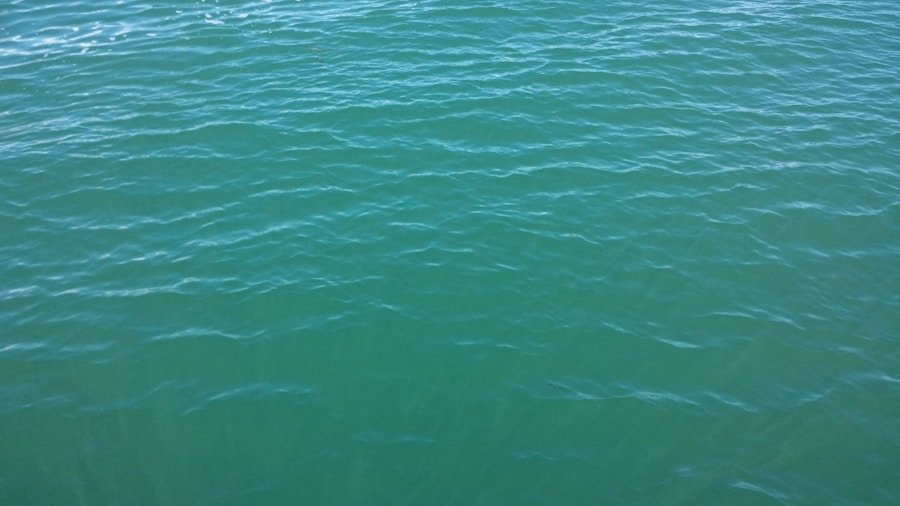Water temperature plays a crucial role in our enjoyment of aquatic activities, influencing everything from our comfort levels to the behavior of marine life. When we think about swimming, snorkeling, or engaging in water sports, the temperature of the water can significantly enhance or detract from our experience. A comfortable water temperature can invite us to dive in and explore, while frigid waters can deter even the most enthusiastic swimmers.
Understanding the importance of water temperature helps us make informed decisions about when and where to engage in these activities. Moreover, water temperature is not just a matter of personal comfort; it also affects the ecosystem. Different species of fish and marine organisms thrive at specific temperatures, which can impact fishing conditions and biodiversity.
By recognizing the significance of water temperature, we can better appreciate the delicate balance of marine environments and our role within them. This understanding encourages us to be more mindful of our choices and their potential impact on both our enjoyment and the health of aquatic ecosystems.
Key Takeaways
- Water temperature is important for both comfort and safety in swimming and water sports
- Factors such as ocean currents, air temperature, and proximity to land affect water temperature in Cabo
- The ideal water temperature for swimming and water sports is typically between 78-82 degrees Fahrenheit
- The best times of year for optimal water temperature in Cabo are typically during the spring and fall months
- Water temperature in Cabo can be measured using a thermometer or by checking local weather reports
Factors that Affect Water Temperature in Cabo
In Cabo San Lucas, several factors contribute to the fluctuations in water temperature throughout the year. One of the primary influences is the geographical location of Cabo, situated at the southern tip of the Baja California Peninsula. The region experiences a unique blend of ocean currents, including the warm waters of the Pacific Ocean and the cooler currents from the Sea of Cortez.
This interplay creates a dynamic environment where water temperatures can vary significantly depending on the time of year and prevailing weather conditions. Additionally, seasonal changes play a vital role in determining water temperature.
Conversely, during winter, cooler air temperatures can lead to a drop in water temperature, particularly in deeper areas. Wind patterns and rainfall can also influence surface temperatures, making it essential for us to stay informed about these factors when planning our aquatic adventures.
Ideal Water Temperature for Swimming and Water Sports

When it comes to swimming and water sports, there is a general consensus on what constitutes an ideal water temperature. Most people find that temperatures between 75°F (24°C) and 82°F (28°C) are comfortable for swimming. Within this range, we can enjoy extended periods in the water without feeling too cold or overheated.
For activities like snorkeling or scuba diving, slightly cooler temperatures may be acceptable, especially if we are equipped with wetsuits that provide insulation. However, personal preferences can vary widely. Some individuals may prefer warmer waters for leisurely swimming, while others might enjoy the refreshing chill of cooler temperatures during more vigorous activities like surfing or wakeboarding.
Understanding our own comfort levels is essential as we navigate different water temperatures in Cabo, allowing us to tailor our experiences to suit our preferences while still enjoying all that the ocean has to offer.
Best Times of Year for Optimal Water Temperature
| Month | Water Temperature (°C) |
|---|---|
| January | 25 |
| February | 26 |
| March | 27 |
| April | 28 |
| May | 29 |
| June | 30 |
| July | 31 |
| August | 32 |
| September | 31 |
| October | 30 |
| November | 28 |
| December | 26 |
Cabo San Lucas boasts a climate that allows for year-round aquatic activities, but certain times of the year offer particularly optimal water temperatures for swimming and water sports. Generally, late spring through early fall presents the warmest water conditions, with average temperatures peaking around August and September. During these months, we can expect inviting waters that beckon us to dive in and explore the vibrant marine life beneath the surface.
Conversely, winter months can bring cooler water temperatures that may not be as inviting for swimming without proper gear. While some hardy souls may still enjoy the ocean during this time, many prefer to wait until spring when temperatures begin to rise again. By planning our trips around these seasonal variations, we can maximize our enjoyment and ensure that we experience Cabo’s waters at their best.
How to Measure Water Temperature in Cabo
Measuring water temperature is a straightforward process that can enhance our understanding of current conditions before we take the plunge. Various methods are available for gauging water temperature, ranging from simple handheld thermometers to more advanced digital devices. For those of us who prefer a low-tech approach, a traditional floating thermometer can provide an accurate reading when placed in the water for a few minutes.
For those who enjoy technology, smartphone apps and websites often provide real-time data on local water temperatures based on buoy readings and other sources. These tools can be incredibly useful for planning our outings, allowing us to check conditions before heading out for a day on the water. Regardless of how we choose to measure it, being aware of current water temperatures helps us make informed decisions about our aquatic activities.
Effects of Water Temperature on Marine Life

Water temperature is a critical factor influencing marine ecosystems and the behavior of various species. Many fish and marine organisms have specific temperature ranges in which they thrive, affecting their feeding patterns, breeding cycles, and migration routes. For instance, warmer waters may attract certain species closer to shore, providing excellent opportunities for fishing and snorkeling enthusiasts like us.
Conversely, extreme temperature fluctuations can have detrimental effects on marine life. Coral reefs, for example, are highly sensitive to changes in temperature; prolonged exposure to elevated temperatures can lead to coral bleaching and subsequent ecosystem collapse. By understanding how water temperature impacts marine life, we can better appreciate the delicate balance within these ecosystems and take steps to protect them during our visits.
Tips for Enjoying the Water at Different Temperatures
As we venture into Cabo’s waters, it’s essential to adapt our approach based on varying water temperatures. For warmer waters, we might consider engaging in leisurely activities such as swimming or paddleboarding without any additional gear.
In contrast, when faced with cooler waters, we should consider wearing wetsuits or rash guards to maintain body heat while enjoying activities like surfing or diving. Bringing along warm beverages for after our swim can also enhance our comfort level as we transition from the cool ocean back to land. By being prepared for different temperatures, we can ensure that our experiences remain enjoyable regardless of the conditions.
Balancing Comfort and Safety in Choosing Water Temperature
Ultimately, finding a balance between comfort and safety is paramount when choosing to engage with water at varying temperatures. While warmer waters may feel inviting, it’s essential to remain aware of potential risks such as dehydration or overheating during prolonged exposure. Staying hydrated and taking breaks in shaded areas can help mitigate these risks.
On the other hand, while cooler waters may be invigorating, we must also be cautious about hypothermia or discomfort during extended periods in lower temperatures. Listening to our bodies and recognizing when it’s time to exit the water is crucial for ensuring a safe experience. By prioritizing both comfort and safety in our aquatic adventures, we can fully enjoy all that Cabo’s beautiful waters have to offer while respecting our own limits and well-being.
If you’re interested in learning more about water temperature in Cabo, you should check out the article on cabo-adventures.net. This article provides valuable information on the ideal water temperatures for various water activities in Cabo, helping you plan your trip accordingly. Whether you’re looking to go snorkeling, diving, or simply enjoy a relaxing swim, understanding the water temperature can enhance your overall experience in this beautiful destination.
FAQs
What is the average water temperature in Cabo?
The average water temperature in Cabo ranges from 70°F (21°C) in the winter to 85°F (29°C) in the summer.
When is the best time to visit Cabo for warm water temperatures?
The best time to visit Cabo for warm water temperatures is during the summer months, from June to September, when the water temperature is around 85°F (29°C).
Is the water temperature in Cabo suitable for swimming and water activities?
Yes, the water temperature in Cabo is suitable for swimming and water activities throughout the year, with the warmest temperatures occurring in the summer months.
What factors can affect the water temperature in Cabo?
Factors that can affect the water temperature in Cabo include seasonal changes, ocean currents, and weather patterns.
Are there any specific areas in Cabo with different water temperatures?
The water temperature in Cabo is generally consistent throughout the region, but there may be slight variations in temperature in different areas due to local conditions and currents.



